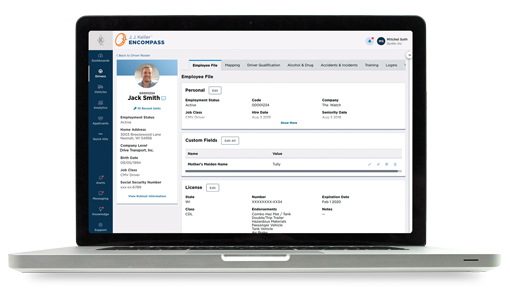Sr. Transportation Management Editor — J. J. Keller & Associates, Inc.
4 Critical Elements of Truck Driver Reward Programs
Driver recognition and reward programs can increase driver efficiency, decrease potential liability, and reduce turnover.
Published On: 08/14/2020


Written by:
Mark Schedler
Driver recognition and reward programs, combined with a robust performance management process, can aid in moving drivers from unacceptable or marginal performance to a level of meeting or exceeding standards. Driver incentives increase driver efficiency, decrease potential liability, and can reduce turnover.
A driver incentive program has four critical elements that should be followed:
The Right Metrics
There are a lot of metrics to choose from when it comes to creating a driver incentive program. Between the electronic control module (ECM), advanced driver assistance systems (ADAS), electronic logging devices (ELDs), and dash cameras, you’ll have the data you need for an incentive program. Be sure to focus on the critical behaviors.
The Right Incentives
To change behavior, drivers must care about the data you consider as most important. Money in a driver’s paycheck and recognition are often the best ways to get drivers to behave differently and make better choices.
Use a weighted average composite score based on a range of key factors to determine a payout. It will likely be perceived as fairer and generate more cost savings than a lost bonus due to one incident.
A driver that loses an incentive payment early in a bonus period because of an event, like an overweight citation, may give up his/her focus on safe and efficient behaviors until the new period starts. But if a driver has a chance at a partial payout even after an adverse incident, they may choose to do well on other factors, such as fuel efficiency and avoiding triggered safety events.
The Right Communication
Driver scorecards can combine risk-event data and performance analytics to present a balanced evaluation of drivers. This is essential as it allows your team to see the real value and risk of each driver.
Scorecards highlight the best performers, motivate friendly competition, emphasize cost saving and safe behavior, and sustain continuous improvement as a keystone of the company culture.
Driver scorecards support retention efforts and are an integral tool to recognize positive behaviors and draw attention to negative ones. Top performers need to feel appreciated if you want to keep them.
Ongoing Monitoring
The benefits of recognizing and coaching drivers will not last without ongoing monitoring of behaviors. Do not confuse dependability with loyalty. Good performers also need to feel appreciated by management on an ongoing basis, just as lower performers need to be coached and trained.
It’s important to note that your “good drivers” who are the most productive may represent your highest risk for negligent supervision if they engage in unsafe behaviors, such as speeding, to increase their productivity.
In Closing
Successful fleets incentivize safe behavior over maximizing productivity, with the primary goal of improving financial results. Productivity improvements tend to be small but can add up to meaningful financial benefits, especially when spread over a large number of drivers. In contrast, risky behaviors shown by just a few drivers can put your company’s viability at risk.
An incentive and recognition program should be simple to understand and perceived as fair if you’re going to successfully motivate drivers to change behaviors. The Encompass® System provides visibility to driver behaviors through dash cams and ELDs. Used together or individually, the system provides quick insight into good and poor driving habits through driver scorecards. Request a conversation with a compliance specialist to learn more about improving driver behaviors or call us today at 855.693.5338.
You may also enjoy the following articles:
Sign up for our newsletter!
We'll help you stay on top of regulations, best practices, and fleet industry news. Sign up to receive a monthly email notification with links to our most recent blog articles, free resources, and event invites.
